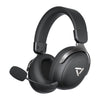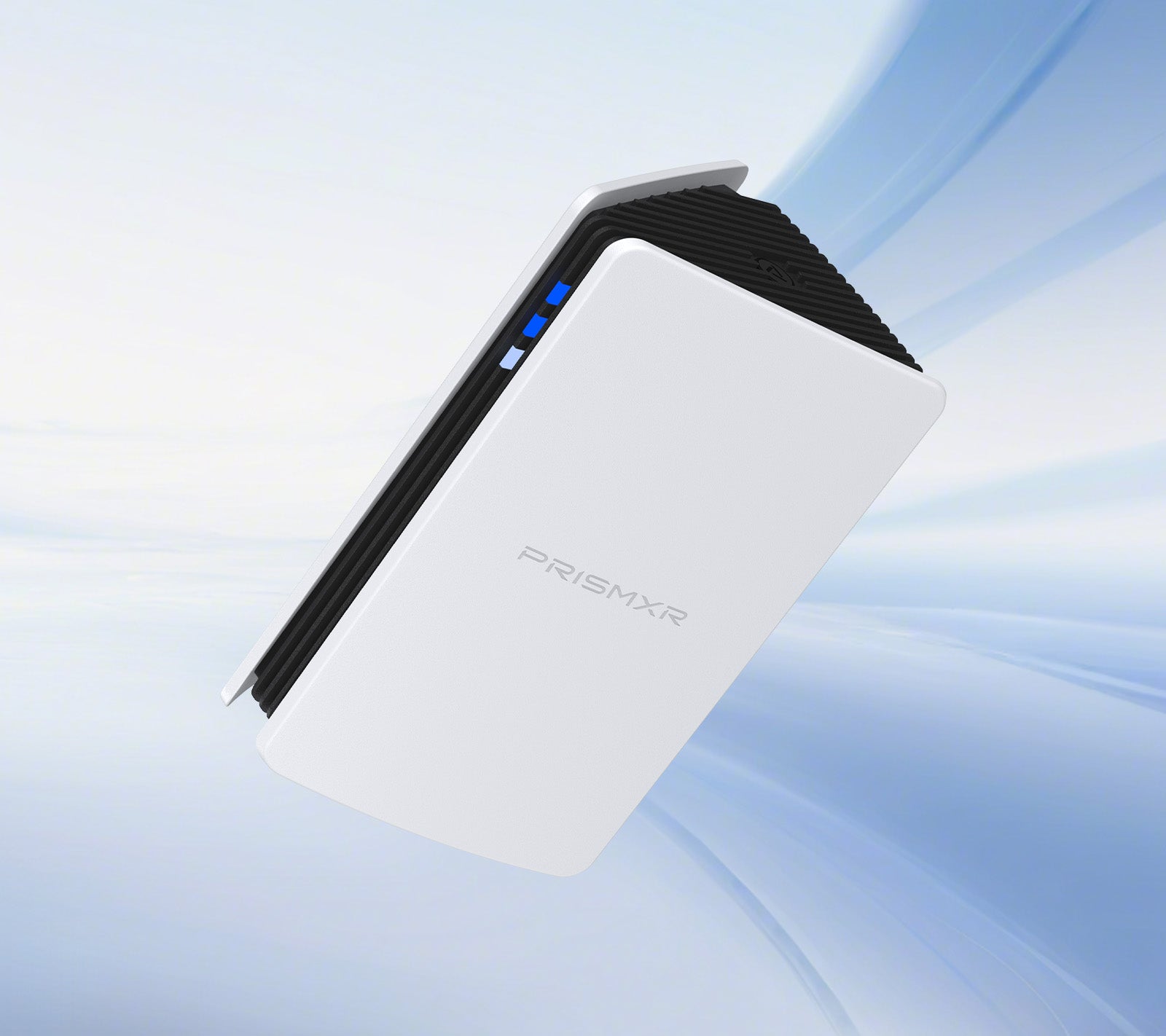You've invested in a powerful gaming PC, a high-end VR headset, and the latest games. You're ready to dive into immersive worlds and share your epic moments with the world. But then it happens: the dreaded lag spike. Your character freezes, your stream stutters, and your virtual reality becomes a pixelated mess. The culprit? Often, it's the most overlooked piece of tech in your setup—your router.
For modern entertainment, a standard ISP-provided router simply won't cut it. Demanding activities like game streaming, VR exploration, and live broadcasting require a dedicated powerhouse designed to handle massive amounts of data with zero compromise. This guide will help you understand what makes a router truly great for these tasks and highlight the key features you need to look for.
What Truly Makes a Router the "Best" for Streaming?
When we talk about the best streaming router, we're not just referring to the one with the biggest number on the box. It's about consistent, reliable performance under heavy load. For gamers and streamers, two factors are non-negotiable: low latency and high bandwidth.
Latency, often called ping, is the time it takes for data to travel from your device to the server and back. In gaming, high latency means delay between your action and the game's response—a death sentence in competitive play. Bandwidth is the volume of data that can be transferred at once. Streaming a high-quality VR experience or a 4K broadcast consumes enormous bandwidth. A weak router becomes a bottleneck, causing buffering and quality drops.
This is why specialized equipment is emerging. For a deep dive into top-tier options, check out our guide on the best router for gaming and streaming.
Key Features to Hunt For in Your Next Router
Before you make a purchase, knowing what specifications to prioritize will save you from future headaches. Here’s a breakdown of the essential features.
Wi-Fi 6 (802.11ax) is a Must-Have
Think of Wi-Fi 6 as a major highway upgrade. Older Wi-Fi standards are like congested city streets. Wi-Fi 6 introduces technologies like OFDMA (Orthogonal Frequency-Division Multiple Access) which allows the router to communicate with multiple devices simultaneously, rather than one at a time. This is crucial for a home where your gaming PC, VR headset, phone, and smart TV are all connected at once.
Dual-Band or Tri-Band? Understanding the Difference
Most modern routers are at least dual-band, broadcasting separate 2.4GHz and 5GHz signals. The 2.4GHz band has better range but is slower and more crowded. The 5GHz band is faster and less prone to interference but has a shorter range. For the best router for game streaming and VR, you must use the 5GHz band.
Tri-band routers add an additional 5GHz band. This is a game-changer. You can dedicate one 5GHz band exclusively to your VR headset or gaming console, ensuring that other household internet traffic—like someone streaming Netflix—doesn't interfere with your performance.
The Magic of MU-MIMO and Beamforming
MU-MIMO (Multi-User, Multiple Input, Multiple Output) allows a router to talk to multiple devices at the exact same time, rather than rapidly switching between them. Beamforming is a smarter signal technology; instead of broadcasting Wi-Fi in all directions, it detects where your devices are and focuses a stronger, more direct signal toward them. Together, they create a more efficient and stable connection for every device on your network.
Why a Specialized Router Can Be a Game-Changer for VR
Virtual reality is perhaps the most demanding application for a home network. Best router for VR streaming isn't just a marketing term; it's a specific category of hardware. VR streaming involves rendering complex, high-frame-rate visuals on your PC and then wirelessly transmitting them to your headset with imperceptible delay. Any hiccup breaks immersion and can cause discomfort.
A standard router, even a good one, is designed for general-purpose use. A router built for VR, however, is fine-tuned for this single, intense task. It prioritizes the PC-to-headset connection above all else, using advanced software and hardware to create what is essentially a dedicated wireless bridge.
Product Spotlight: The Puppis S1 - A Router Built for Immersion
For those who are serious about their wireless VR and streaming experience, a purpose-built solution like the Puppis S1 from PrismXR is worth considering. It's engineered from the ground up to eliminate the common pain points of wireless PC-VR streaming.
Dedicated, Uninterrupted Connection
At its core, the Puppis S1 features a powerful 1.3GHz Dual-core chipset running PrismPulse Mode. This specialized software creates a direct, high-speed bridge between your PC and VR headsets like the Quest 2 and Quest Pro. Combined with advanced beamforming technology, it actively minimizes interference from other Wi-Fi signals, giving you a rock-solid connection to fully immerse yourself in your gaming world.
Engineered for Speed
The Puppis S1 doesn't cut corners on hardware. It supports 2x2 MIMO with a 160MHz bandwidth, boasting a total network speed of 3000 Mbps (2402Mbps on the 5GHz band and 575Mbps on the 2.4GHz band). This immense bandwidth is the highway your VR data needs to travel without congestion.
Unbelievably Easy Setup with EaseLink
One of the biggest hurdles with new tech is complicated setup. The Puppis S1 tackles this with its unique EaseLink technology. This Bluetooth feature creates an independent, secure link between the PrismXR App and the router itself. The result is a hassle-free, streamlined setup process. You don't need to install any drivers—just connect and you're virtually ready to go.
Built for the Community
Compatibility is key, and the Puppis S1 supports a wide range of VR headsets including the Quest 2, Rift, Quest Pro, Pico 4, HTC Vive, and Valve Index. It works with official software as well as popular third-party apps like Virtual Desktop and SteamVR, and is compatible with both Windows and MacOS.
Beyond its primary function, it also offers versatile modes. The "WiFi Hotspot Mode" lets you share your PC's network, while "WiFi Adapter Mode" can help a PC without built-in Wi-Fi get connected.
If your current setup is struggling with wireless VR or high-bitrate streaming, the Puppis S1 represents a focused solution designed specifically for these challenges.
Optimizing Your Network for Peak Performance
Buying a great router is only half the battle. Where and how you set it up is equally important.
-
Placement is Key: Position your router in a central, elevated location, away from walls and large metal objects. Don't hide it in a cabinet!
-
Wired Where Possible: For the ultimate stability, connect your gaming PC and any media consoles directly to the router using an Ethernet cable. This frees up the Wi-Fi for devices that truly need it, like your VR headset.
-
Channel Selection: Use your router's app or admin panel to scan for the least congested Wi-Fi channel in your area. Most modern routers can do this automatically.
-
Quality of Service (QoS): This feature, found in most good routers, allows you to prioritize traffic. Tell your router that your gaming PC or VR headset gets the right-of-way, ensuring smooth performance even when others are downloading or streaming.
Your Next Level Streaming Experience Awaits
Don't let an inadequate router be the weak link in your high-end setup. The frustration of lag, buffering, and dropped connections is completely avoidable. By understanding the critical features and investing in hardware designed for performance—whether a high-end conventional router or a specialized device like the Puppis S1—you can unlock the full potential of your games, your VR headset, and your streams.
The difference is night and day. It's the difference between watching a pixelated slideshow and living inside a fluid, responsive virtual world. It's the difference between a choppy broadcast and a professional-looking stream. Your audience, your teammates, and most importantly, your own enjoyment, deserve nothing less than the best connection possible.










